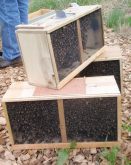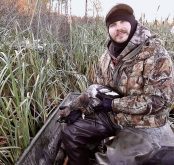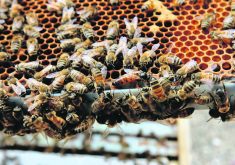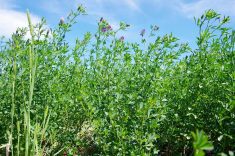Hot weather might be slowing some Manitobans down, but soaring temperatures have kept leafcutter bees flying high.
“Leafcutter bees like the hot weather, more so than honeybees,” said David Ostermann, a pollination expert with Manitoba Agriculture, Food and Rural Initiatives.
“Honeybees, if it gets too hot, will shut down, but leafcutters tend to keep going,” he said.
Greg Shirtliff would agree.
The Starbuck-area producer has 430 acres of alfalfa on the go this year, including fields of Actis alfalfa for seed production.
Read Also

Manitoba Ag Days plans star-studded speaker lineup
Dragons’ Den panellist Arlene Dickinson among speaker series highlight for 2026 Manitoba Ag Days in Brandon, alongside slate of agriculture experts.
He is using leafcutter bees for pollination.
“You need the bees for pollinating,” he said. “Honeybees will do a little bit of pollinating, but not much, mainly because of the shape of the alfalfa flower.”
Having grown alfalfa since 1995 and maintained his own bees since 2000, Shirtliff said that last year was an exceptionally good one for leafcutters. This year is on the right track as well.
“The way it was last year, it was kind of like California weather. It turned hot and dry, and the sun would be out all day,” said the forage-seed producer. “In weather like that the bees would be out all day long, every day.”
This summer has seen weather similar to that of 2011, although there was about a week of rain and wind that briefly slowed leafcutter bees down, Shirtliff said.
“But if the forecast holds true, we’ll have a pretty good return this year,” he said.
Previous wet years had presented some challenges for forage seed producers using leafcutters.
“They’re not very water savvy,” Shirtliff explained. “Put it this way, they don’t swim well.”
The producer notes that in years when water pools on fields, bees can end up drowning after mistakenly landing on water instead of terra firma.
“Leafcutters don’t like water too much, and in wet years you can lose quite a few,” he said.
But a good flying season means leafcutter bees are able to pollinate most of the summer. It also leaves them in a strong reproductive position at the end of the season.
Leafcutters stockpile food for larval and pupa bees inside their nests, and a good harvest for the bees translates into lots of food for the next generation, said Ostermann.
“I think the most important thing is good flying weather, so they’re visiting the flowers and out pollinating,” he said. “That way it collects the nectar and stuff to provide for its offspring.”














